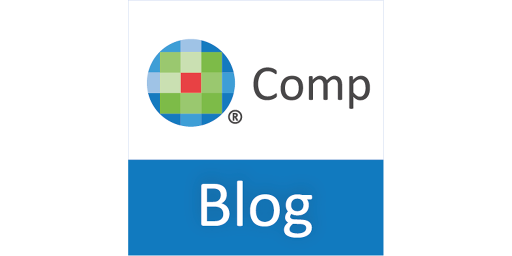Patent Wars – Innovators, Revolutionaries, and the Race to Reform
Nearly two decades worth of Federal Circuit and Supreme Court rulings have thrown the patent system into disarray and weakened patent rights for inventors. Subject matter eligibility is a confused, chaotic mess – leaving even the Federal Circuit Chief Justice at a loss on how to determine eligibility. The muddied state of invention enablement puts at risk the software innovations fueling economic growth and the key life science innovations that can save lives. Court interventions on injunctions have made it all but impossible for patent owners to stop others from using their property rights without permission, turning predatory infringement into an efficient business model. This already perfect storm was compounded by an act of Congress a decade ago that inadvertently created a patent killing machine that has weaponized the patent office against inventors. This has all been bolstered domestically by the deep pocketed marketing and lobbying campaigns of a big tech industry that is now destroying the ladder it once climbed up on. Amplifying the threats within and heightening the sense of urgency for solutions, international exploitation in an undeclared cold war has led to one of the greatest wealth transfers in human history – and begs the existential question of who is going to develop the technologies of tomorrow.
Revolutionaries on Reform
Over the course of the past couple of months, Dr. Ashley Sloat and I had the opportunity and honor to host conversations with thought leaders across the patent world. Working from their insights, this episode explores the biggest problems plaguing patenting and how those problems impact the innovation economy that so very tightly depends on strong, predictable, and reliable patents. Building on that understanding, we work toward getting a more complete view of the legislative, judicial, and educational solutions needed to get back to the gold standard patent system. In doing so, we not only talk with our guests about their support for the proposed solutions on the table, but we also explore the strongest criticisms.
We’ve done so with the help of distinguished industry heavyweights who are currently deep in the trenches of these issues – and working tirelessly toward their solutions. Our guests include:
- Judge Paul Michel – Former Chief Justice of the nation’s top patent court, who stepped down from his position to be able to speak freely on these problems.
- Professor Adam Mossoff – Simply one of the most brilliant minds in intellectual property law, whose research is regularly leaned on by Congress, the Federal Circuit, and Supreme Court on all things patent law and innovation policy.
- Randy Landreneau – President of US Inventor, the largest inventor advocacy group in the country, a group that has worked diligently to push through legislation and administrative changes to protect inventors and innovative startups.
Our guests have been exceptionally generous with their time. We recorded over six and a half hours’ worth of interviews! Recognizing that we want to reach as many people with this as possible and time is always precious, we’ve woven highlights from these conversations together into a single episode. Typically, we only do one episode per month, but given the quality of these conversations and the value in the unique perspectives of each guest, following publication of this condensed episode, we will be releasing the full-length interviews in weekly installments for anyone who’d like to go deeper.
Solutions to the Surface
The problems are many and the stakes couldn’t be higher, but hope is far from lost! With the help of our guests who are working relentlessly toward undoing the evisceration of our patent system, we explore the virtues and viabilities of a wide array of potential solutions to the biggest problems plaguing patenting:
- Eligibility. This hallmark of the U.S. patent system and key enabler of economic success has been under attack by the judicial system. We examine the recently introduced Patent Eligibility Restoration Act and how it hopes to fix the eligibility mess. Our guests also carefully analyze the bill’s language and potential for side effects, weighing in particularly on concerns regarding the use of “non-technological”, the potential to make software unpatentable subject matter, the risk of reintroducing pathogen patents, and whether or not the bill would overrule the Bilski, Myriad, Mayo, and Alice (aka the “Four Horsemen of the Innovation Apocalypse”) decisions that gave rise to the judicially created eligibility exceptions.
- Enablement. The other half of the distorted judicial puzzle that is having a devastating impact, especially to life science and pharma patents. We discuss upcoming SCOTUS cases like Amgen v. Sanofi that could help or hurt the present confusion around the ability to patent critical, lifesaving innovations.
- Predatory Infringement. The America Invents Act (AIA) and its most unfortunate progeny, the Patent Trial and Appeal Board (PTAB), have resulted in an 84% invalidation rate and the death of thousands of valid patents at the hands of infringers looking to profit from innovations they didn’t invest in to create. This infringement story is worsened by another SCOTUS decision that made it nearly impossible to stop infringers from making, using, and selling pirated inventions. We explore two pieces of legislation that have been designed to tackle these problems, but each in its own unique way: The STRONGER Patents Act and the Restoring America’s Leadership in Innovation (RALI) Act. While exploring the pros and cons of each, we also consider how a bridge might successfully be built from one to the other.
- Patent Troll Mythology. Every good narrative needs a convincing villain. Big Tech’s patent troll narrative has been one of the most well funded and successful misinformation campaigns in history. It created the moral panic that predicates so many of the judicially and legislatively manufactured issues we discuss. Debunking this myth is at the core of meaningful reform. We discuss its genesis and how it formed the basis of congressional action for the AIA and PTAB.
- Patent Pending Indefinitely. A patent is a constitutionally created property right and is often compared to a title deed like we might have on our home and other pieces of property. At present, this seems like a very broken metaphor. The PTAB’s invalidation rates are jaw-dropping, but studies have shown that even district courts invalidate patents at an alarming rate of about 40%. We discussed with our guests what it would take to get to a point where the determination by the PTO was closer to something binding, with invalidations being an extremely rare exception in any context. This includes talk of a Gold-Plated Patent System as well as how Selection Effect impacts court invalidation rates.
- Undeclared Cold War. A system void of any competition can operate internally however it wants and sometimes still end up ok. Many experts are beginning to argue, however, that there’s a real sense of urgency in addressing these internal problems because of the rapidly escalating external threat that is China’s undeclared cold war. We examine Congressional attention to the evolving problem of China going from a country that steals technology to a country that is successfully replicating the parts of the US system that worked so well for centuries – and what the national security implications would be for letting an authoritarian regime, one that’s actively engaged in human rights violations, define and build the technologies of tomorrow.
- Quality Patents. As long as this is the world we live in, as inventors and practitioners, we cannot settle for anything less than quality when it comes to our patents. We have to focus on minimizing surface area for these sorts of challenges. We close out the episode by providing some practical tips for creating the highest quality patents we can under the circumstances.
The Innovation Race
We’ve been wanting to do a patent reform focused episode like this for a long time, particularly since we covered US Inventor’s 2021 Decade of Stolen Dreams rallies with our American Inventor Horror Story episode – it was then that we truly witnessed firsthand just how devastating the America Invents Act and the PTAB have been for inventors. Flash forward a couple of years to present, and the makers of a new documentary entitled, “The Innovation Race” reached out to us to screen their film.
With bipartisan interviews with folks like Senator Chris Coons from Delaware and Representative Thomas Massie from Kentucky, combined with a myriad of inventors, judges, generals, law professors, and policy experts, several of whom you’ll hear from in this episode, the movie breaks down this systematic erosion of intellectual property rights and explains the imminent economic and national security threats of China exploiting these weaknesses in US patent protection. You can find options for streaming and learn more at innovationracemovie.com. The end of the film, which touches on solutions, provides a launching point for our discussion today.
Going Deeper on the Issues
We’ve covered these issues extensively in past episodes and our expert panels have provided very practical tips and strategies for dealing with the world as it exists. Check out the following to learn more:
Josh Sloat
Josh Sloat serves as an Executive Technology Advisor with Aurora Consulting and provides consultation for patents in the software, information technology and telecommunications spaces. With over 15 years of engineering […see more]
Ashley Sloat
Ashley is Director of Patent Strategy at Aurora Consulting and a USPTO-registered patent practitioner who specializes in the development and management of patent portfolios for startup ventures and emerging growth […see more]







